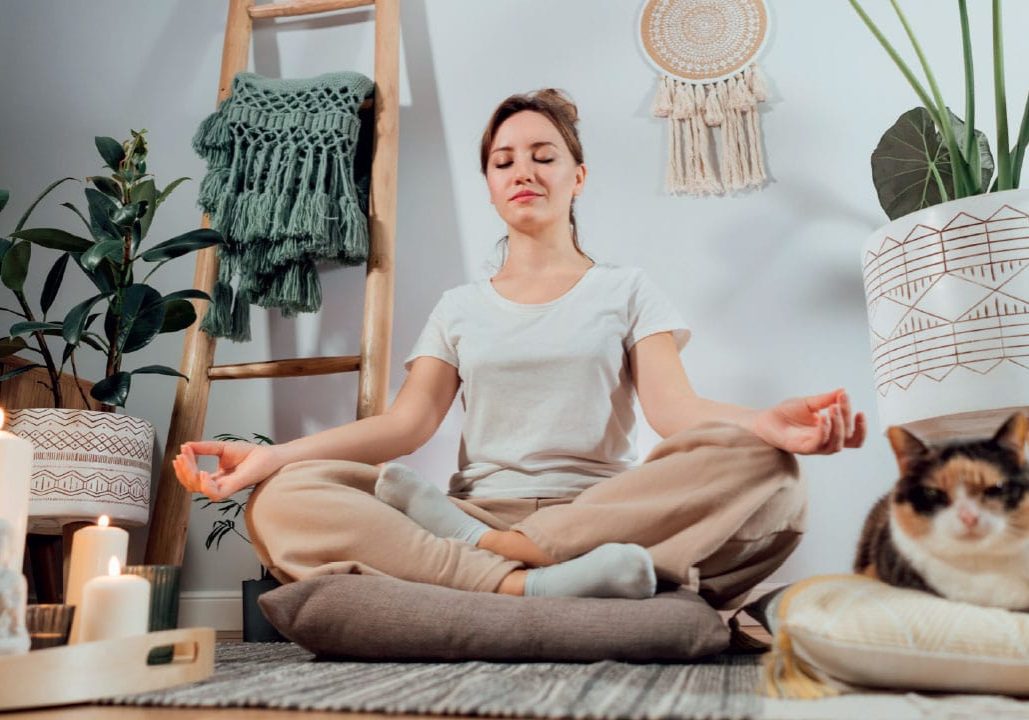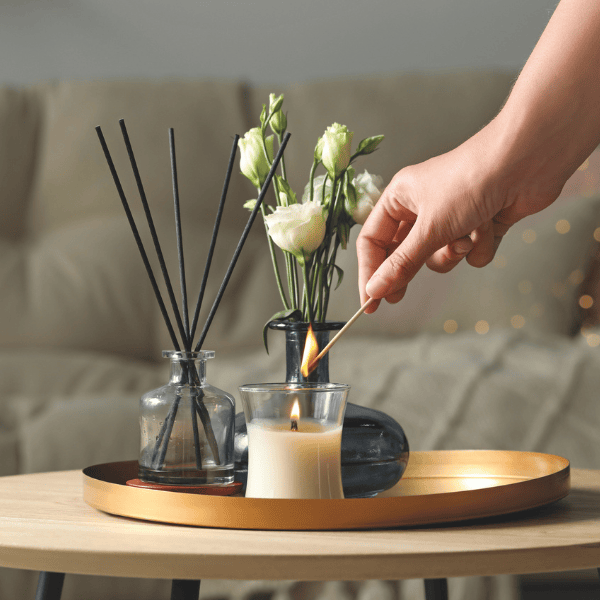
Healing Spaces
Creating true healing spaces: a guide to transformative wellness environments.
By Magnolia Zunigada.
Reading time: 3 minutes
In a world filled with constant noise, stress, and distractions, the importance of creating true healing spaces has never been greater. Whether you are a yoga teacher, an ayurvedic practitioner, or someone simply seeking solace and rejuvenation, creating a space that nurtures healing and wellbeing is essential. Here, we will explore the elements of a healing space, why they matter and how you can create one that truly transforms lives.
The importance of healing spaces
Healing spaces are environments designed to promote physical, mental, and emotional wellbeing. They provide a sanctuary where individuals can disconnect from daily stresses and reconnect with themselves. True healing spaces are not just about aesthetics; they are about creating an atmosphere that encourages growth, transformation and peace.
Why healing spaces matter
Stress reduction: A well-designed healing space can significantly reduce stress levels, helping individuals find calm and clarity amid chaos.
Enhanced healing: Such spaces support healing by promoting relaxation and allowing the body’s natural healing processes to function optimally.
Emotional wellbeing: Healing spaces offer a safe environment for individuals to process emotions, release tension and cultivate inner peace.
Community connection: They provide a communal space for individuals to gather, share experiences and support one another in their healing journeys.
Key elements of healing spaces
Creating a healing space involves considering various elements that contribute to its effectiveness. Here are some key components to consider:
Physical environment
Lighting: Natural light creates a warm, inviting atmosphere. Use soft, adjustable lighting to mimic natural cycles if natural light is limited.
Colours: Choose calming colours such as soft blues, greens and earthy tones that evoke a sense of peace and serenity.
Sound: Incorporate soothing sounds, like gentle music or nature sounds, to enhance relaxation and create a tranquil atmosphere.
Aromatherapy: Use essential oils or incense to create a calming olfactory experience. Scents like lavender, chamomile and sandalwood can promote relaxation.
Textures: Incorporate soft, comfortable textures through rugs, cushions and blankets to create a cosy, welcoming environment.
Mindful layout
Open spaces: Design spaces that encourage movement and flow, avoiding clutter and obstacles that hinder relaxation.
Personal areas: Create personal spaces for reflection, meditation, or quiet contemplation. Include comfortable seating or meditation cushions.
Nature integration: Incorporate natural elements like plants, water features, or natural materials to connect individuals with the earth and foster a sense of grounding.
Intentional practices
Mindfulness and meditation: Encourage mindfulness practices through guided meditations, yoga sessions, or quiet time for reflection.
Personalisation: Allow individuals to personalise their space, whether through personal items, affirmations, or meaningful symbols.
Community rituals: Foster a sense of community through shared rituals, such as group meditations, sharing circles, or workshops.
Emotional safety
Inclusivity: Create an inclusive environment where all individuals feel welcome, respected and valued.
Non-judgemental space: Cultivate a space free from judgement where individuals can express themselves authentically without fear.
Supportive environment: Encourage supportive interactions and provide access to resources, such as books, workshops, or professionals who can assist in the healing process.
Thoughtful decoration
Avoid harmful imagery: Be mindful of the images and symbols you display in your healing space. Avoid pictures or representations of known sexual predators or individuals associated with harm or abuse. Instead, choose art and imagery that inspire positivity, healing and empowerment.
Creating true healing spaces requires thoughtful consideration of the physical environment, mindful practices and emotional safety. By designing spaces that foster peace, connection, and transformation, we can support individuals on their healing journeys and promote holistic wellbeing. Whether you are creating a healing space for yourself or others, remember that the intention and care you put into the design will profoundly impact those who experience it. Embrace the power of healing spaces and watch as they transform lives.
HOW TO CREATE YOUR OWN HEALING SPACE
Set clear intentions: Define the purpose of your healing space and what you hope to achieve. Consider the needs of those using the space and how it can best support them.
Choose the right location: Choose a location that is easily accessible, yet offers privacy and tranquility. Depending on your needs and available resources, consider both indoor and outdoor options.
Design with purpose: Integrate the above elements into your design, highlighting the details to enhance the healing experience.
Incorporate personal touches: Add personal touches that resonate with you and those who will use the space. This could include meaningful art, inspirational quotes, or personal artefacts.
Adapt and evolve: Be open to adapting and evolving your space based on feedback and changing needs. A healing space should grow and transform alongside its users.
Magnolia Zuniga is a clinical ayurvedic specialist and yoga teacher with 30 years experience. She is passionate about creating authentic healing spaces and integrating ayurvedic principles into modern living. Visit: magnoliazuniga.com or her on Instagram @magnoliasezso



